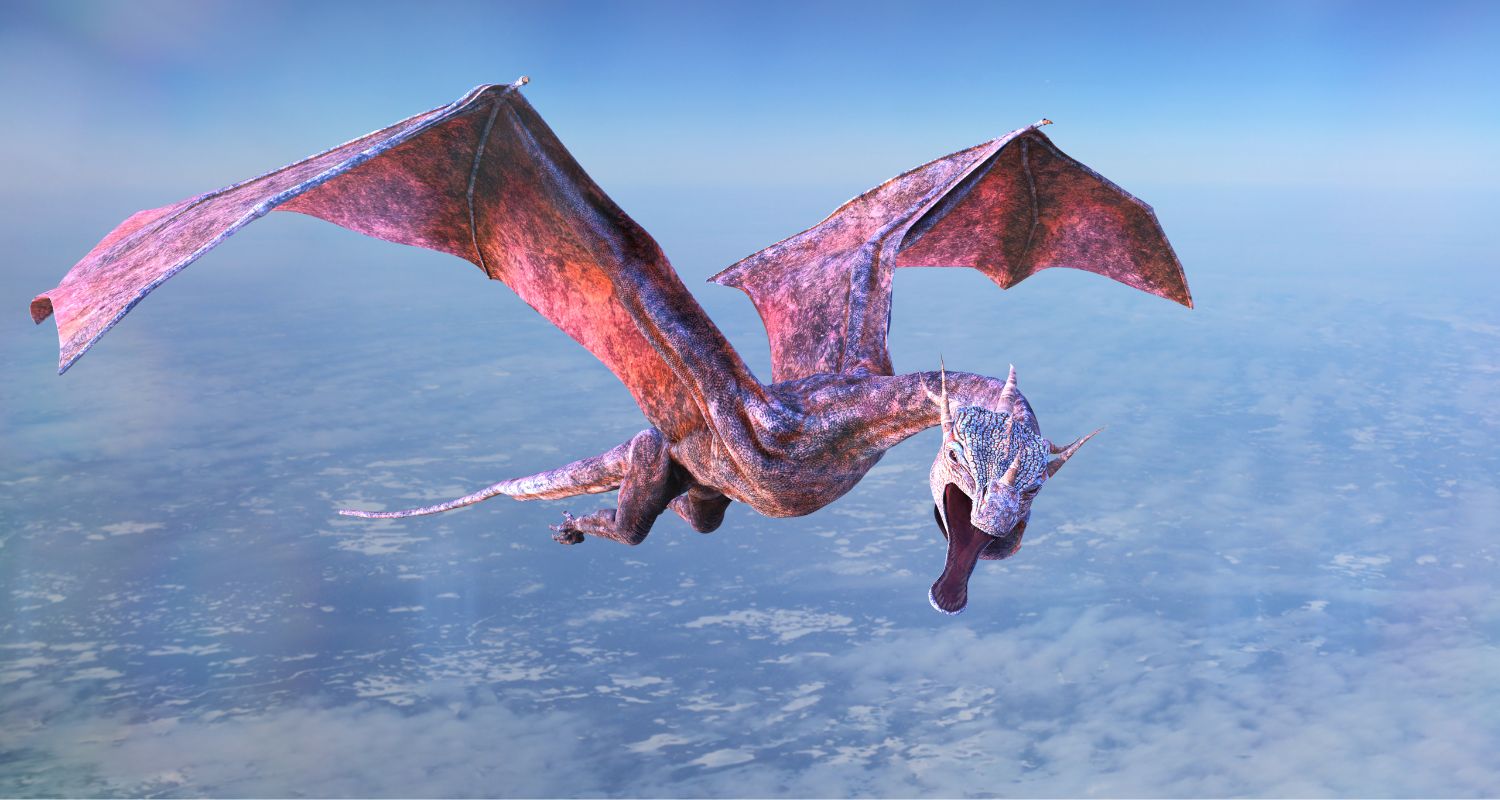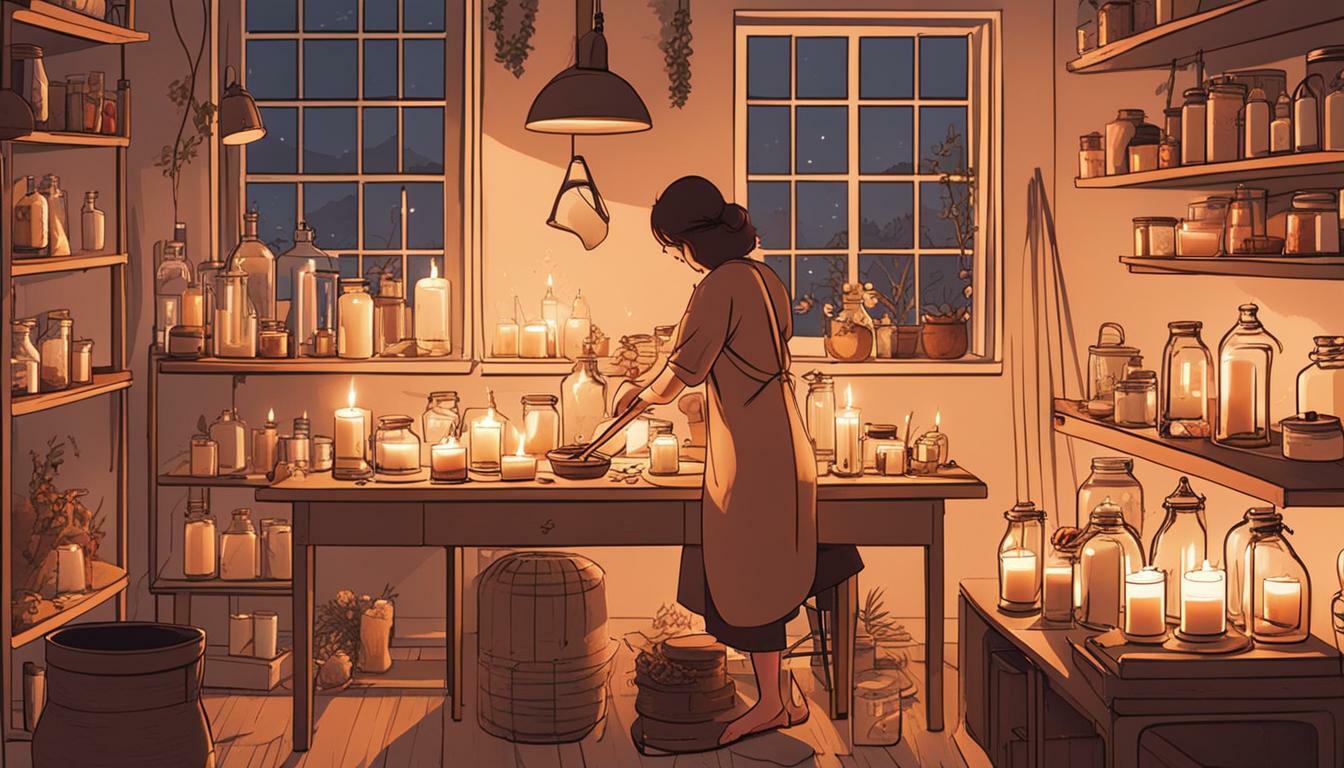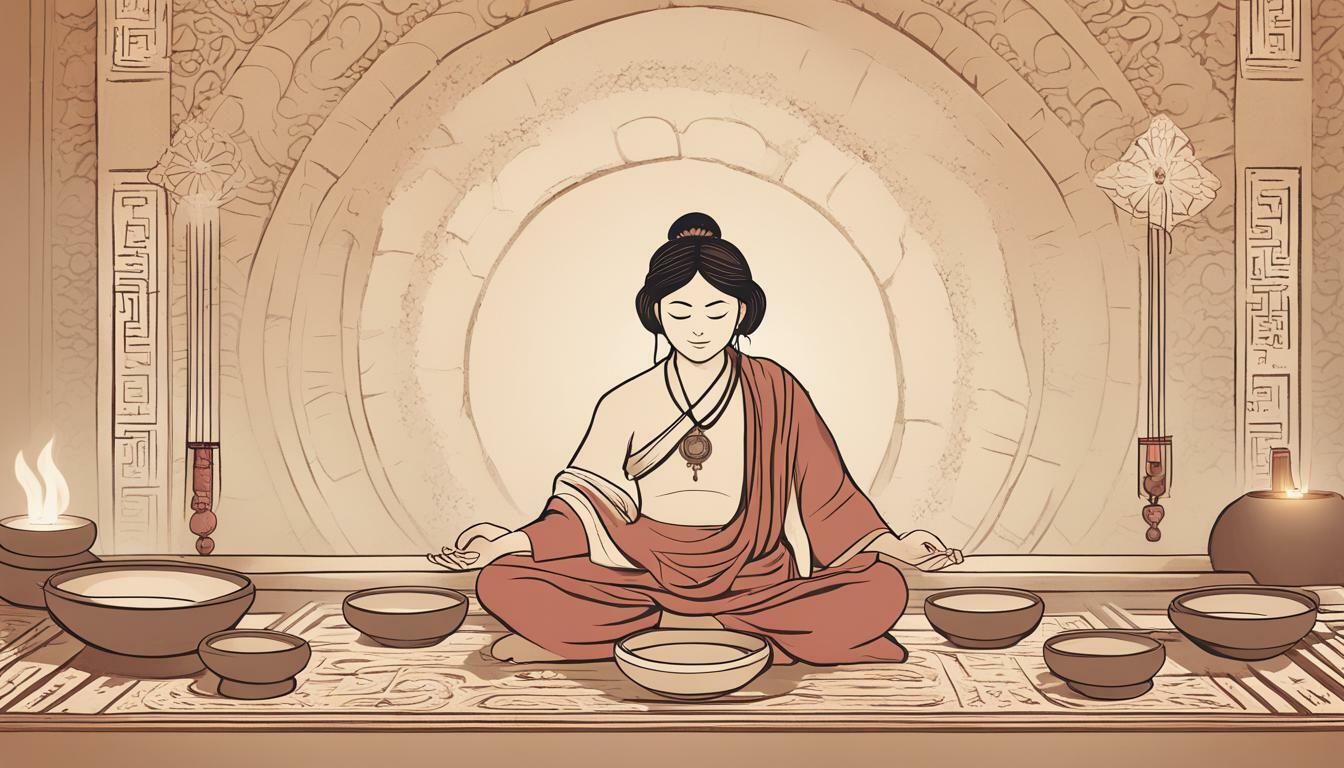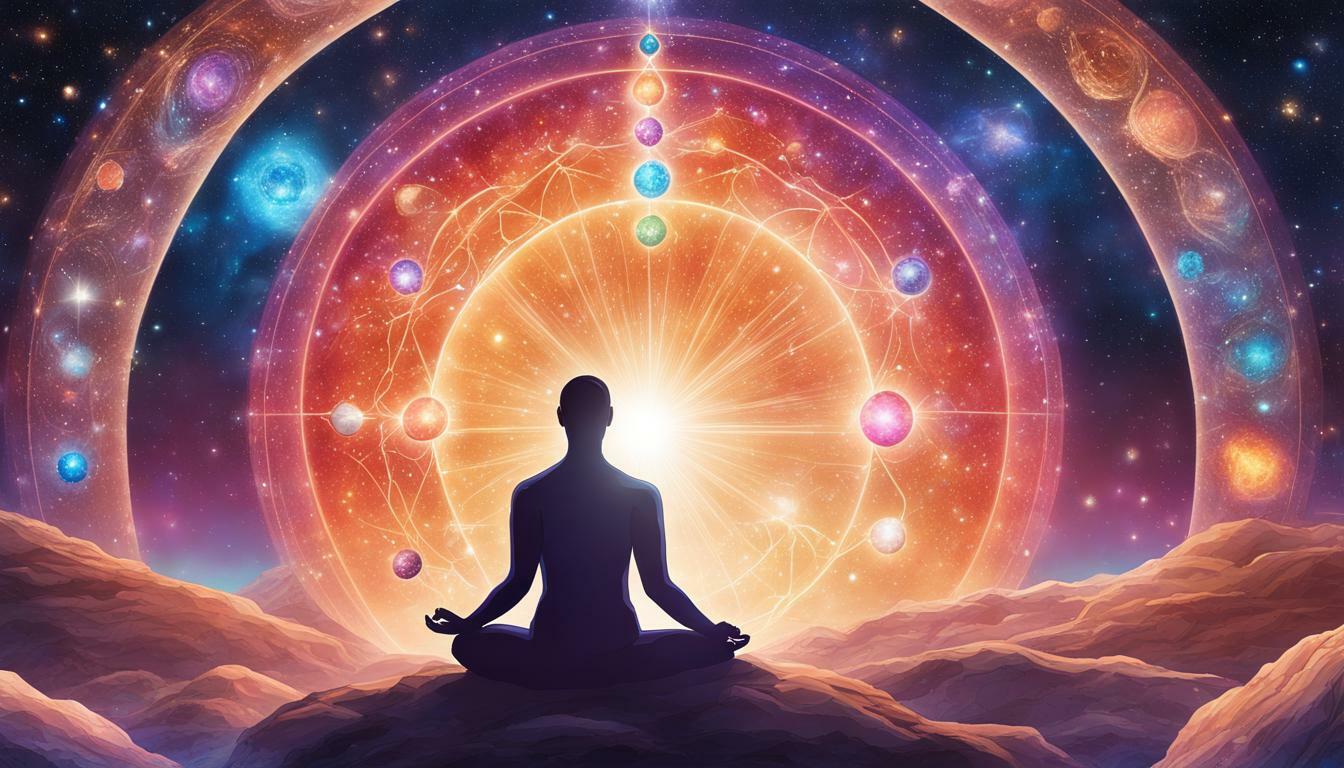As a journalist and lover of mythology, I find myself constantly fascinated by the many mythical creatures that exist in various cultures and traditions around the world. From the powerful dragon to the elusive unicorn, these creatures have long captured the imagination of humanity and continue to do so today.
In this article, I aim to explore the meanings behind these creatures and reveal the stories and legends that surround them. Each culture has its unique perspective on these creatures, and I hope to shed light on the many nuances and interpretations that exist.
Key Takeaways
- Mythical creatures have been a part of human storytelling for centuries
- These creatures have different meanings and symbolism in various cultures
- Exploring the stories behind these creatures can reveal important lessons and insights
Understanding Mythical Creatures
Mythical creatures have captivated cultures throughout history. From the dragon in Chinese mythology to the phoenix in Greek mythology, these fantastical beings have been revered and feared in equal measure. But what exactly are mythical creatures and what do they represent?
At their core, mythical creatures are symbolic representations of various aspects of the human experience. They can represent virtues such as courage or intelligence, or they can be embodiments of vices such as greed or envy. They can also represent natural phenomena such as storms or seasons.
Mythical creatures are not simply imagined beings. They have roots in various cultures and mythologies, and their symbolism is often deeply ingrained in these cultural beliefs. For example, the unicorn is a mythical creature with a single horn on its forehead. In Western cultures, it is often associated with purity and innocence. However, in other cultures such as China and India, the unicorn is depicted as a fierce and powerful creature.
The Symbolism of Mythical Creatures
Mythical creatures are also often associated with specific elements such as fire, water, or air. These elements can further enhance their symbolic meaning. For instance, the dragon is often associated with fire, which represents power and transformation. Similarly, the mermaid is associated with water, which represents emotions and the subconscious.
Moreover, mythical creatures can be interpreted differently depending on the context in which they are used. For example, in Christian art, the griffin – a mythical creature with the body of a lion and the head of an eagle – represents Christ’s dual nature as both human and divine.
The Importance of Understanding Mythical Creatures and Their Symbolism
Understanding mythical creatures and their symbolism can give us a greater appreciation for the rich cultural heritage that surrounds us. It can also provide us with a deeper understanding of the human experience and the various virtues and vices that shape it. By delving into the world of mythical creatures, we can gain a new perspective on ourselves and the world around us.
Mythical Creatures from Different Cultures
Exploring the world of mythical creatures is akin to taking a journey through the most incredible imaginations of the human race. From ancient times, almost every civilization has a rich tapestry of supernatural beings that make up their folklore and mythology. These creatures serve as vessels of symbolism, teaching cultural values, and representing the triumph of good over evil, or the dangers of moral decay.
The variety of creatures is vast, and their stories are as diverse as the cultures that created them. In this section, we’ll take a captivating journey across the globe, exploring the fascinating world of mythical creatures from different cultures.
| Mythology | Creature | Description |
|---|---|---|
| Japanese | Kitsune | A fox spirit capable of shape-shifting and possessing humans, kitsune can bring either good luck or misfortune depending on their mood. |
| Greek | Centaurs | A half-human, half-horse creature known for their physical strength and love of wine. They are often portrayed as wild and barbaric. |
| Norse | Nidhogg | A giant serpent believed to live in the roots of the world tree, Yggdrasil, Nidhogg gnaws at the roots and represents the destruction of life. |
| Native American | Thunderbird | A powerful bird capable of creating thunder with the beating of its wings. It is often depicted as a protector of the people and is revered for its strength and wisdom. |
“Mythical creatures from different cultures are like ambassadors for a community’s beliefs, values, and fears.”
These were just a few examples of the vast range of mythical creatures from different cultures around the world. Each creature has a unique meaning and importance to the culture it belongs to, reflecting its beliefs, values, and fears.
It’s important to remember that while these creatures may be fantastical and extraordinary, they hold a deep cultural significance, and their stories have been passed down for generations. Their legacy lives on, reminding us of our shared humanity and the power of the human imagination.
Legends of Legendary Creatures
As a copywriting journalist, I have always been fascinated by the stories behind legendary creatures and the significance they hold in different cultures. These creatures have been the subject of myths and legends for centuries, passed down through generations as cautionary tales or as representations of virtues and vices. In this section, we will explore some of the most well-known legendary creatures and the lessons they impart to humanity.
The Phoenix
One of the most famous legendary creatures is the Phoenix, a bird that is said to rise from the ashes of its own destruction. In many cultures, the Phoenix symbolizes rebirth and renewal, as well as the cycle of life and death. The legend of the Phoenix teaches us that even when things seem hopeless, there is always the possibility of a new beginning.
The Unicorn
The Unicorn is another legendary creature that has captured the imaginations of people around the world. In Western culture, the Unicorn is often depicted as a symbol of purity and innocence, while in Eastern cultures, it is associated with good luck and prosperity. The story of the Unicorn reminds us of the importance of holding onto our own sense of purity and goodness, even in the face of adversity.
The Kraken
The Kraken is a legendary sea monster that was said to dwell off the coasts of Norway and Greenland. This creature was said to be so large that it could swallow ships whole. The legend of the Kraken teaches us the power of the unknown and the importance of respecting the forces of nature.
The Dragon
Perhaps the most iconic of all legendary creatures, the Dragon has been a symbol of power and strength in many cultures. In Western culture, the Dragon is often seen as a symbol of chaos and destruction, while in Eastern cultures, it is associated with good luck and prosperity. The legend of the Dragon teaches us that there are always forces in the world that are more powerful than ourselves, and that we must learn to work with these forces in order to achieve our goals.
These are just a few examples of the many legendary creatures that have captured the imaginations of people throughout history. By understanding the symbolism and significance of these creatures, we can gain a deeper appreciation for the world around us and the lessons it has to teach us.
Supernatural Creatures and Their Interpretations
Throughout history, supernatural creatures have played a significant role in shaping our beliefs and fears. From the bloodthirsty vampire to the elusive Bigfoot, these creatures have captivated our imagination and sparked our curiosity.
Interpreting supernatural creatures is a complex process that involves examining their cultural context, historical significance, and psychological impact. For example, the werewolf represents our primal instincts and the struggle between our civilized self and our wild nature.
Similarly, ghosts are often interpreted as the manifestation of unresolved emotions or unfinished business, while demons represent the darker side of human nature and embody our fears.
However, the interpretation of supernatural creatures also varies depending on the culture and time period. In some cultures, dragons are revered as powerful symbols of wisdom and good luck, while in others they are feared as dangerous beasts that must be defeated.
Regardless of their interpretation, supernatural creatures continue to fascinate us and provide valuable insights into the human psyche.
Mythological Beings and Their Symbolism
Mythological beings have always been a source of fascination for me. From the majestic griffin to the elusive unicorn, each creature holds a special meaning and significance. These mythical creatures have been molded by human imagination for centuries, becoming powerful symbols of our cultural beliefs, values, and fears.
For example, the phoenix is a well-known symbol of rebirth and renewal. This ancient creature is said to rise from the ashes of its own destruction, representing the cycle of life, death, and resurrection. The dragon, on the other hand, is a symbol of strength and power. In Chinese mythology, dragons are revered creatures and protectors of the people.
Other mythological beings represent more complex meanings. The Sphinx, with its human head and lion’s body, represents the duality of human nature – intelligence and brute strength. The mermaid, half-human and half-fish, is a symbol of temptation and transformation.
Each culture has its own set of mythological beings, with distinct characteristics and meanings. In Norse mythology, the Valkyries were warrior women who chose the bravest warriors to bring to Valhalla. In Hindu mythology, the Garuda is a divine bird and mount of Lord Vishnu, symbolizing courage and loyalty.
Mythological beings have also been interpreted in different ways over time. For example, the unicorn was originally seen as a fierce and powerful creature in ancient Greek and Roman mythology. Later, it became associated with purity and innocence in medieval folklore.
Overall, the symbolism behind mythological beings is endlessly fascinating. By understanding the meanings behind these creatures, we can gain a deeper understanding of our cultural heritage and the human psyche.
Folklore Creatures and Their Meanings
Throughout history, various cultures have developed their own unique folklore creatures, often with symbolic meanings attached to them. These creatures have been passed down through generations via traditional storytelling, becoming an integral part of their cultures and beliefs.
One such folklore creature is the Banshee, a female spirit from Irish mythology who is said to wail and scream as a warning of an impending death. The Banshee is believed to be a representation of the inevitability of death and the importance of honoring and respecting the dead.
Another popular folklore creature is the Chupacabra, a vampiric creature from Latin American folklore that is said to suck the blood of livestock. The Chupacabra is believed to represent the fear and anxiety that comes with the unknown, as well as the danger posed by wild animals.
The Wendigo is another folklore creature from Native American mythology, representing greed, excess, and the danger of isolation. The Wendigo is said to be a cannibalistic creature that preys on humans who have become lost or stranded in the wilderness.
In Japanese folklore, the Kappa is a water-dwelling creature that is said to pull unsuspecting victims into the water and drown them. The Kappa is believed to represent the dangers of water and the importance of respecting nature.
Overall, folklore creatures serve as cautionary tales and representations of cultural beliefs and values. They continue to intrigue and fascinate people around the world, providing a glimpse into the rich and diverse tapestry of human mythology and folklore.
Unveiling Mythical Beasts
As I continue to explore the world of mythical creatures and their meanings, I am drawn to the fascinating realm of mythical beasts. These creatures are often depicted as powerful and fearsome, possessing qualities that are both awe-inspiring and terrifying.
One of the most renowned mythical beasts is the dragon. This creature has been revered and feared in cultures across the world, with its depiction varying from culture to culture. In Chinese mythology, dragons are viewed as symbols of power, strength, and good luck. Meanwhile, in European folklore, dragons are often portrayed as malevolent beasts who hoard treasure and breathe fire. Regardless of their cultural context, dragons are always represented as fiercely independent and incredibly powerful creatures.
Another famous mythical beast is the griffin. This creature is typically depicted as a blend of a lion and an eagle, possessing the strength of a lion and the keen eyesight of an eagle. In ancient Greek mythology, the griffin was seen as a symbol of divine power and was often used to guard treasure or sacred spaces.
The chimera is another fascinating mythical beast. This creature, which is said to be a combination of a lion, goat, and serpent, was first introduced in Greek mythology. The chimera was seen as a ferocious and powerful monster, embodying the destructive nature of fire.
Lastly, the phoenix is a mythical beast that has appeared in various cultures throughout history. This creature is said to be a symbol of rebirth and renewal, as it is said to rise from the ashes of its own destruction. The phoenix’s bright plumage and ability to rise from the ashes have made it an enduring symbol of hope and resurrection.
Mythical beasts are often seen as representations of humanity’s most enduring traits and struggles. By exploring these creatures and their significance, we can gain a deeper understanding of our own nature and the world around us.
Ancient Creatures and Their Significance
Ancient cultures and civilizations around the world have revered and worshipped mythical creatures for centuries. From the dragon-like creatures in Chinese mythology to the serpent gods of Mesoamerican cultures, these creatures hold great significance and embody powerful symbolism.
One such creature is the Egyptian Sphinx, a mythical being with the body of a lion and the head of a human. In Egyptian mythology, the Sphinx represents royalty and power, and is often depicted as a guardian of sacred places.
The Greek Chimera, a creature with the body of a lion, the head of a goat, and the tail of a serpent, was said to be a symbol of destruction and chaos. Its fiery breath could destroy entire cities, and it was often seen as a warning of impending disaster.
The Norse dragon Nidhogg, who lived beneath the world tree Yggdrasil, was believed to be a symbol of destruction and chaos. It gnawed at the roots of the tree, causing it to wither and deteriorate, representing the decay and decline of the cosmos.
Ancient creatures hold great significance for the cultures that created them. They embody powerful symbolism and represent important values and beliefs. By understanding these creatures and their significance, we can gain valuable insights into the cultures that created them.
Myths and Legends of Mythical Creatures
Myths and legends about mythical creatures have been handed down for centuries, illuminating the rich and diverse cultures of our world. From the majestic dragon to the elusive unicorn, these creatures have woven their way into the very fabric of our collective imagination.
In Greek mythology, the Minotaur was a creature with the head of a bull and the body of a man, born from the union of Queen Pasiphae and a bull. It was kept in a labyrinth and fed on human flesh until it was slain by the hero Theseus.
The legendary phoenix is said to have lived for hundreds of years, rising from its own ashes at the end of its life cycle. In Egyptian mythology, the phoenix represented the cycle of death and rebirth, and was a symbol of immortality.
Greek Mythology:
| Creature | Origin | Description |
|---|---|---|
| Minotaur | Greece | Head of a bull, body of a man |
| Medusa | Greece | A woman with snakes for hair |
| Cerberus | Greece | A three-headed dog guarding the entrance to the underworld |
Egyptian Mythology:
| Creature | Origin | Description |
|---|---|---|
| Phoenix | Egypt | A bird that rises from its own ashes |
| Sphinx | Egypt | A creature with a lion’s body and a human head |
| Anubis | Egypt | A god with the head of a jackal |
The unicorn, a horse-like creature with a single horn protruding from its forehead, has been depicted in mythology and art for thousands of years. In medieval times, it was believed that the unicorn would only allow a virgin to approach it, making it a symbol of purity and chastity.
Myths and legends of mythical creatures continue to captivate and inspire us, reminding us of the wonder and mystery that still exist in the world around us.
Exploring the Symbolic Meanings
One of the most fascinating aspects of mythical creatures is their symbolism. These creatures often represent aspects of human nature, both positive and negative. Whether they embody virtues such as bravery and loyalty or vices such as envy and greed, mythical creatures provide insights into the human psyche.
For example, the majestic phoenix represents rebirth and renewal. Its ability to rise from the ashes after being consumed by flames symbolizes the human ability to overcome adversity and start anew. On the other hand, the cunning serpent represents temptation and deceit. Its association with the biblical story of Adam and Eve highlights the dangers of giving in to temptation and disobeying authority.
Unicorns, with their purity and innocence, symbolize the desire for goodness and the pursuit of perfection. The mythical creature also represents gentleness, humility, and grace. Dragons, with their ferocity and power, symbolize the need for strength and courage to face life’s challenges. They also represent the desire for wealth and the risks associated with greed.
The symbolism behind mythical creatures varies from culture to culture. In Chinese mythology, the dragon represents power, strength, and good luck. In Norse mythology, wolves represent a fierce and unrelenting spirit, as embodied by the god Odin’s hunting companions. Exploring these cultural differences reveals the diversity and richness of mythical creatures and their symbolism.
Mythical creatures continue to captivate our imagination and influence our culture. Whether they are represented in art, literature, or popular media, they provide a window into the human experience and the stories we tell ourselves. Understanding their symbolism helps us to unlock the deeper meanings behind these stories and appreciate the enduring legacy of mythical creatures.
Conclusion
As we conclude our journey through the world of mythical creatures and their meanings, we have uncovered a rich tapestry of symbolism, culture, and history. From the humblest folk tale to the grandest epic, these creatures have captured our imaginations and inspired us for generations.
Through our exploration of mythical creatures from different cultures, we have seen how they serve as a bridge between the supernatural and the everyday, weaving together the threads of human experience into a vibrant tapestry of meaning and purpose. We have also come to appreciate the universal themes that underpin these creatures, from the pursuit of power to the struggle for survival, and the importance of compassion and humility in the face of adversity.
As we look back on our journey, we are reminded of the enduring power of myth and legend to shape our understanding of the world around us. Whether we are exploring the mysteries of ancient civilizations, or simply seeking to find meaning in our everyday lives, the stories of mythical creatures continue to hold a special place in our hearts and imaginations.
So let us take a moment to reflect on the lessons we have learned, the wonders we have seen, and the magic that surrounds us every day. For in the world of mythical creatures and their meanings, there is always something new to discover and appreciate. Thank you for joining me on this journey, and may your own adventures be filled with wonder, joy, and meaning.






